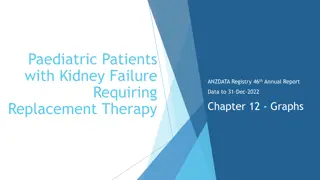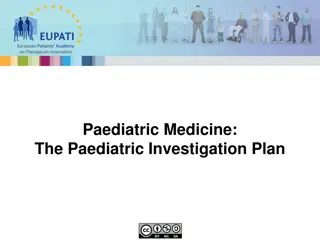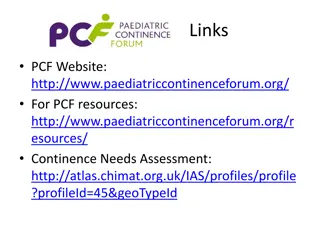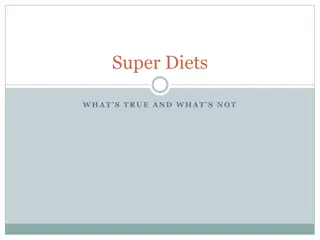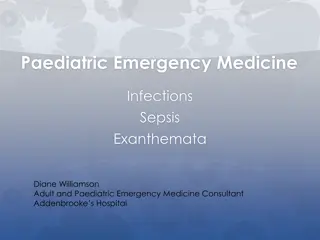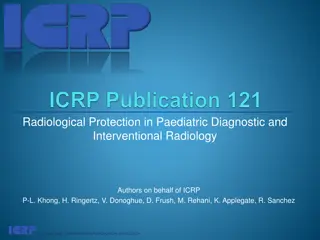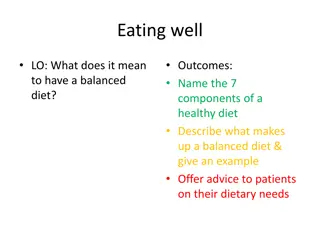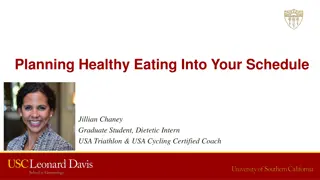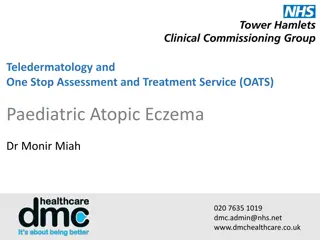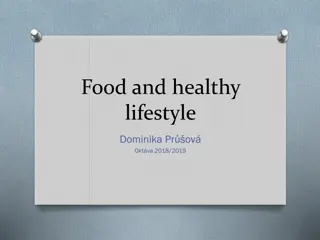Understanding the Importance of a Healthy Diet for Children by Collette Green, Specialist Paediatric Dietitian
A healthy diet is essential for children to meet their nutritional needs and support growth and development. Collette Green, a Specialist Paediatric Dietitian at ESNEFT, highlights the crucial elements of a child's diet, including energy, protein, vitamins, minerals, and fiber. The article covers healthy eating guidelines, packed lunches, school meals, food allergies, obesity, and how food can impact behavior and learning. Recommendations include incorporating a variety of nutrients, regular meals to regulate blood sugar, and the importance of carbohydrate foods, protein, and omega-3 sources in a child's diet.
Download Presentation

Please find below an Image/Link to download the presentation.
The content on the website is provided AS IS for your information and personal use only. It may not be sold, licensed, or shared on other websites without obtaining consent from the author. Download presentation by click this link. If you encounter any issues during the download, it is possible that the publisher has removed the file from their server.
E N D
Presentation Transcript
A Healthy Diet for our children what does this mean? Collette Green Specialist Paediatric Dietitian ESNEFT
Outline Healthy eating guidelines Packed lunches & school meals Food allergies Obesity Food & behaviour Eating disorders
Introduction A healthy diet is crucial to give the right balance of foods to meet nutritional needs and support the brain, children require: Energy for growth children still actively growing 1. Protein to build new tissues repair & growth 2. Vitamins and mineral for healthy growth and development - Including brain 3. Fibre for bowel health 4. We encourage variety to ensure a wide range of nutrients to stay healthy Regular meals helps regulate blood sugar Common childhood nutritional problems include constipation, iron deficiency anaemia, food refusal/fussy eating, overweight/obesity, food allergies and Vitamin D deficiency.
What does an adequate and varied diet look like?
Healthy eating guidelines School age children grow fast and still have high nutritional requirements in relation to their body size Adult needs 35 kcals / kg 10 year old needs 68 kcals / kg 5 year old needs 90 kcals / kg Children also require adequate iron, protein, vitamin A, C & D, fibre and calcium as the key nutrients Appetites vary from day to day. Eat better if in a routine. What, and how, children eat can affect their mood, behaviour and learning.
Carbohydrate foods These are required to provide the body with energy Complex carbohydrates best, simple carbohydrates (sugars)- limit Each meal should be based on food from this group Higher fibre varieties help children feel full for longer (advised from 5 years of age) Children should be discouraged from following a low carb diet as children require these foods for growth.
Protein & Omega 3 Consists of meat, fish, eggs, beans and other non dairy sources. As well as protein provides essential minerals including iron. School meals should include a portion of this each day. Can be a good source of Omega 3 (essential fatty acid) support proper development & functioning of the brain Main sources of omega 3 s flaxseed oil, walnuts, cod liver oils, offal, seafood and oily fish Some reports that children with ADHD and associated behavioural problems have low blood omega 3 levels no current evidence of a strong link
Fruit and Vegetables Should aim for 5 portions per day Rough portion guide size of palm of child s hand Can be fresh, frozen, tinned, dried or juice (although avoid excessive fruit juice and combine with a meal). School fruit snacks can contribute to reaching target Provide a variety of essential vitamins and minerals Important to prevent deficiencies such as scurvy, anaemia
Fibre It is well known that fibre is important for gut health. It also seems to help regulate blood sugar, which may help with mood and attention. The positive effects on mood and attention of eating a meal, may last for a shorter time if there is less fibre. Dietary fibre and some fermented foods (like live yoghurt) may also promote a healthy microbiome (the name given to the billions of micro-organisms living in our gut). This may, in turn, also contribute to good mood and general wellbeing, in ways that are not yet fully understood.
Foods and drinks high in fat and sugar A healthy diet should be low in these foods These foods provide extra energy and few nutrients. Children are eating too much sugar (>2x what they should) Can cause a build up of bad fats and lead to weight gain as well as tooth decay/type 2 diabetes How much is too much?
Fluid Adequate hydration is vital for good health. Dehydration can cause a lack of concentration, tiredness and dizziness. Drinking water is the easiest way to get sufficient fluid Children need frequent reminders as don t recognise thirst as well Recommended intakes: 4-8yrs 1280ml 9-13yrs Boys 1680mls & Girls 1520mls >14yrs adult recommendation
Packed lunches & School meals Often schools have a healthy eating policy which encompasses packed lunches Should be encouraged to adhere to healthy eating guidelines More likely to provide excess fat and sugar Packed lunches can be important for some children especially restricted diets School meals have standards set by the government which schools have to meet. Free school meals and snacks can help support healthy eating
Food allergies/Intolerances Some children have food allergies/intolerance(s) which can mean that their mood or behaviour are affected by specific foods or ingredients. These can produce physical symptoms too. Can cause issues such as eczema, anaphylaxis, nausea and vomiting, abdominal pain and growth issues. Milk, soya, egg and peanut allergies most common 5-8% of children suffer with food allergies Under section 100 of The children and families act (2014) schools have a duty to support pupils with medical conditions Food information Regulations 2014 requires all schools to list allergens Children with food allergies can have much more limited diets
Obesity Since 1992 rates of children who are overweight/obese have doubled. School meals should aim to be healthy to improve children's health especially obesity Last data showed 22% reception children and 34% Year 6 were overweight/obese Associated with psychological and emotional issues including bullying. Children who are overweight/obese more likely to be in adulthood
Food & behaviour Eating a wide variety of nutritious foods helps mood, attention and learning. Eating regular meals also helps promote good mood and attention. Including foods that are rich in dietary fibre may also help. Nutritional supplements may help some children. This is especially true when the diet is low in any particular nutrients. Some evidence children with ADHD can benefit from supplements No evidence of benefit of milk & gluten free diets in ASD
Eating Disorders Eating disorder is a mental health condition where food/excessive exercise is used to cope with feelings/emotions Can affect at any age but usually teenagers (13-17) most affected Includes anorexia nervosa, bulimia, binge eating disorder. Physical signs include poor tolerance to cold, dramatic weight loss, periods stopping. Changes in mood, obsessing around food and or exercise Rising percentage in young males, younger children (including primary school age) and levels overall post covid. ARFID (Avoidant Restrictive Food Intake Disorder) very limited diet & can be due to fear of eating, lack of interest in food and sensory issues. Strongly associated with ASD
Conclusion A healthy diet is important for normal growth and development It is also required to reduce the risk of being overweight/obese Children need a healthy diet combined with exercise to maintain a healthy weight A good variety reduces risk of lack of specific nutrients A regular and well balanced diet can be helpful to ensure good energy levels, better concentration and adequate development




